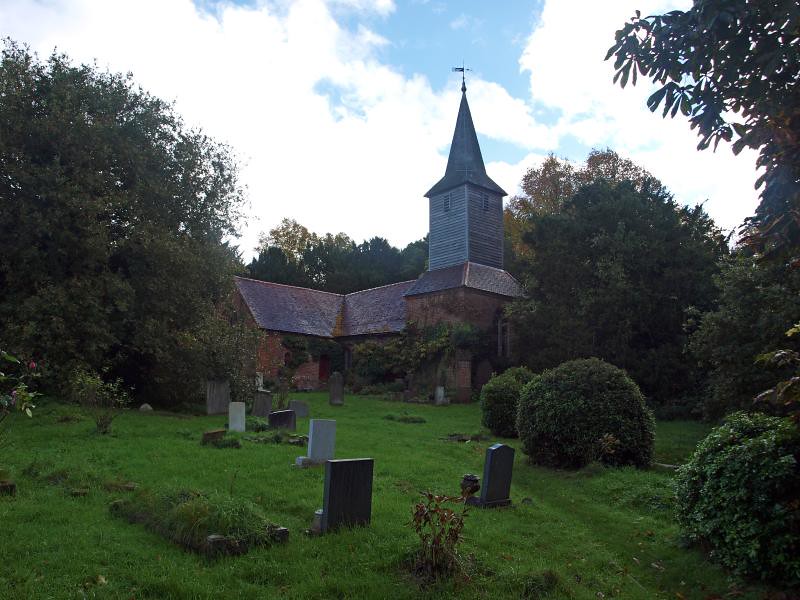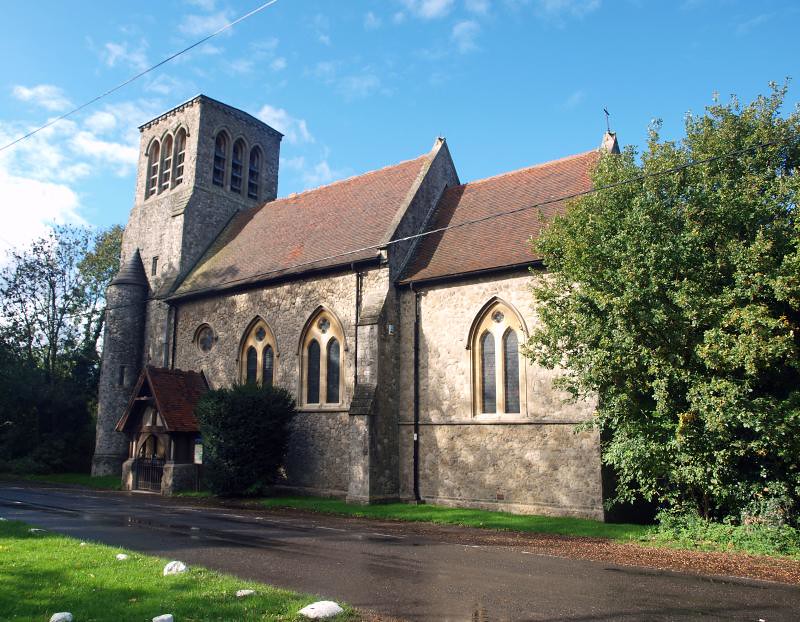I liked both of these churches even though they're not my usual type.
ST MARY THE VIRGIN AND ALL SAINTS. Small church, prettily placed - a surprise in these bungalow surroundings. Nave and chancel early C16, of brick with brick windows, the E window of three lights with Perp panel tracery, very similar to Horndon-on-the-Hill. A N chancel chapel was added in 1621. It has a two-bay arcade with a thick short octagonal pier and round arches. The chapel itself was rebuilt in 1834. The timber belfry was rebuilt in 1842. - TYMPANUM, i.e. plastered wall between upper parts of nave and chancel, resting on a tie-beam. Painted on it the ROYAL ARMS, with the date 1660. - Painted Inscription of 1666 on the N wall. - COMMUNION RAIL, dated 1686, conservative for its date - not yet of the Wren style.
ST MARY. 1876 by William White, tall and very narrow, with W tower, standing immediately along the road, with the wood behind - a romantic setting.
LANGDON HILLS. It is named from the heights on which it stands; there is nothing higher than its 386 feet in a line due north between here and the North Pole. The views all round are wonderful, pleasant woods, sloping meadows, and waving cornfields lying immediately below, with the Thames marshes in the distance and the blue downs of Kent on the horizon. It was one of the sights that thrilled Arthur Young, who wrote of it. Almost at the top is the lofty tower of the new church, from which peals some of the finest music of bells in Essex. A tree-shaded lane winds down to the charming place in which the villagers worshipped in olden days. Deserted and forlorn for years, it is a fine example of the work of the Society for the Protection of Ancient Buildings, which has restored this rare church rebuilt in the brief revival of Gothic in the days of Charles Stuart. Delightful is the moulding of the red bricks framing the east window, flanked by moulded niches. The altar rails have turned balusters and are Jacobean and the three-decker pulpit is in the same style.


No comments:
Post a Comment